In the ever-evolving landscape of kitchen appliances, the contact grill has emerged as a favorite among home chefs and outdoor enthusiasts alike. This compact cooking marvel, designed to deliver the perfect sear and smoky flavor, has seen a surge in popularity across the globe. As the demand for contact grills continues to rise, so does the importance of Original Equipment Manufacturers (OEMs) in shaping the industry. This article delves into the dynamic market forces, technological advancements, and the critical role that OEMs play in the contact grill sector.
The Rising Demand for Contact Grills
The contact grill market has been heating up in recent years, with a surge in demand that reflects a shift in consumer preferences and a growing appreciation for convenience and health. As more families and individuals seek out cooking methods that promise less mess and healthier outcomes, contact grills have emerged as a favorite choice.
These compact and efficient appliances have quickly become a staple in many kitchens, especially in Europe and America, where the demand for contact grills has skyrocketed. The rise in popularity can be attributed to several key factors that have collectively propelled this segment of the kitchen appliance market.
Firstly, the emphasis on health and wellness has played a significant role. Contact grills offer a way to cook food without the need for excess oil, which is a major health concern for many consumers. The even heat distribution of contact grills ensures that food is cooked to perfection with minimal fat, making them a go-to option for health-conscious consumers.
Secondly, the convenience factor cannot be overlooked. Contact grills are designed for quick and easy cooking, allowing users to prepare a variety of dishes with minimal effort. The compact size and ease of use have made them a convenient choice for those who lead busy lifestyles and prefer to cook at home without spending hours in the kitchen.
Additionally, the versatility of contact grills has been a major draw. They can be used to cook a wide range of foods, from lean meats and fish to vegetables and even sandwiches. This versatility has made them a popular choice for those looking to diversify their cooking options without investing in multiple appliances.
The technological advancements in contact grill design have also contributed to the rising demand. Modern contact grills often come with features such as adjustable temperature controls, non-stick surfaces, and easy-to-clean components. These innovations have made the appliances more user-friendly and appealing to a broader audience.
In Europe, the contact grill market has been particularly robust. The region’s preference for outdoor living and grilling has naturally led to a high demand for indoor contact grills. Moreover, the European consumer’s focus on quality and sustainability has driven the demand for high-performance, energy-efficient contact grills.
Similarly, in America, the contact grill market has seen significant growth, driven by the American love for outdoor grilling and the subsequent search for indoor alternatives. The convenience of contact grills, coupled with the trend towards healthy eating, has made them a staple in many American households.
The demographic shift towards a more diverse and multicultural society has also played a part in the rise of contact grills. As people from different cultures bring their culinary traditions to the table, there’s an increased interest in cooking methods that can handle a variety of ingredients and flavors.
Furthermore, the influence of celebrity chefs and cooking shows has not gone unnoticed. As these platforms showcase the ease and efficiency of contact grills, more consumers are drawn to these appliances as a way to replicate the high-quality food they see on their screens.
Despite the current momentum, the contact grill market is not without its challenges. Competition from other cooking appliances, the need for ongoing innovation, and the pressure to maintain high standards of quality and safety are all factors that contact grill manufacturers must navigate.
However, the outlook for the contact grill market remains bright. As the world continues to embrace health, convenience, and culinary diversity, the demand for contact grills is expected to grow even further. With continued innovation and a focus on meeting consumer needs, contact grills are poised to remain a hot commodity in the kitchen appliance industry.
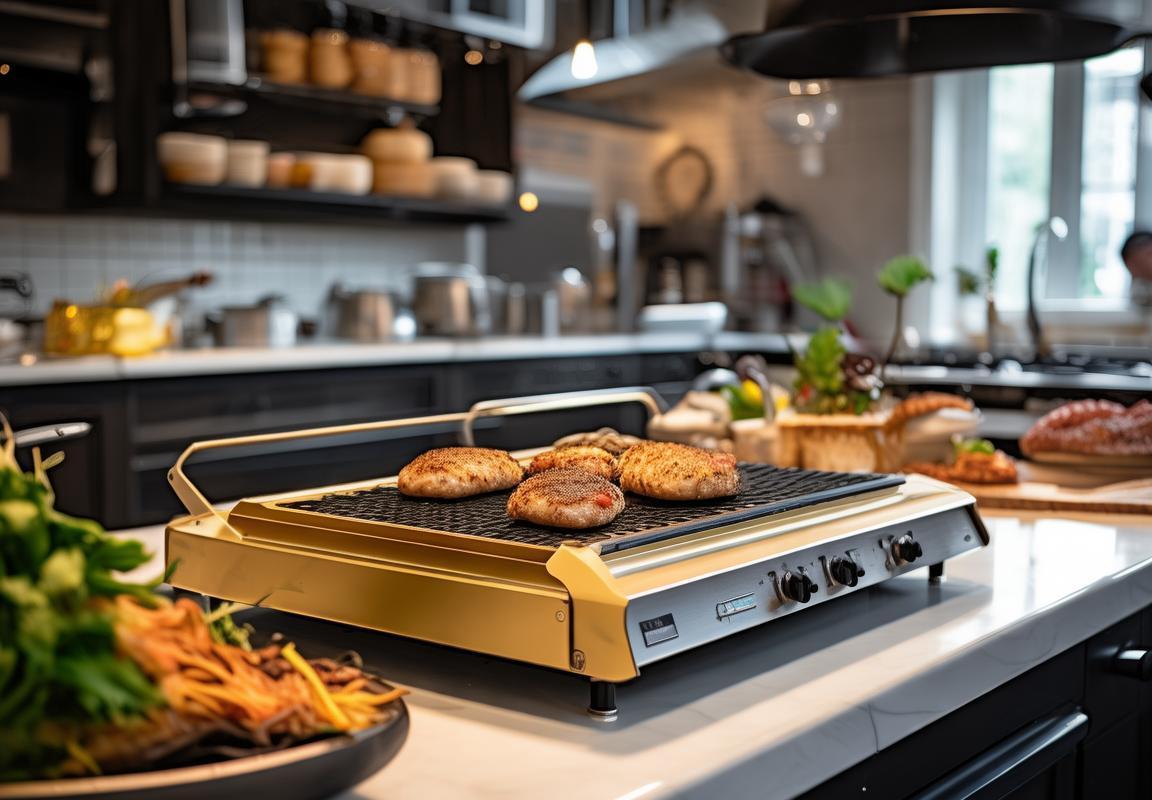
The Role of OEM in the Contact Grill Industry
In the ever-evolving landscape of the contact grill industry, the role of Original Equipment Manufacturers (OEMs) has become increasingly pivotal. These companies, often unseen by the end consumer, play a critical behind-the-scenes role in shaping the market. Let’s delve into how OEMs contribute to the industry.
OEMs are the architects of innovation. They take raw materials and turn them into products that meet the exact specifications of their clients. In the contact grill sector, this means developing grills that are not only efficient and durable but also incorporate the latest technologies. Their ability to innovate is what drives the market forward, offering consumers a wider range of options.
Customization is another key aspect of the OEM’s role. Brands often look to differentiate themselves in a crowded market, and OEMs are adept at creating custom solutions that align with a brand’s identity. Whether it’s a unique design, specific features, or branding elements, OEMs ensure that each contact grill reflects the brand’s vision.
Quality control is non-negotiable in the contact grill industry, and OEMs are the gatekeepers of this process. They are responsible for ensuring that every grill that leaves their facility meets stringent quality standards. This includes rigorous testing, adherence to safety regulations, and a commitment to long-lasting performance.
Efficiency is a cornerstone of the OEM model. By streamlining production processes, OEMs can offer competitive pricing to their clients. This cost-effectiveness allows brands to enter new markets or offer their products at more accessible price points, thereby expanding the reach of contact grills to a broader consumer base.
Collaboration is at the heart of the OEM relationship. They work closely with brands to understand their needs and market strategies. This partnership enables OEMs to anticipate market trends and develop products that are not only in demand but also future-proof. The ability to adapt quickly to changing consumer preferences is a testament to the collaborative nature of OEMs.
Sustainability is a growing concern in the manufacturing sector, and OEMs are responding by incorporating eco-friendly practices into their operations. From sourcing materials to reducing waste, these companies are committed to minimizing their environmental footprint. This not only appeals to conscious consumers but also aligns with the values of many brands.
The supply chain management expertise of OEMs is invaluable. They have the infrastructure and knowledge to manage complex supply chains efficiently. This includes sourcing high-quality components, managing inventory, and ensuring timely delivery. For brands, this means a reliable and consistent supply of contact grills, which is crucial for maintaining their own supply chains.
Innovation in materials and design is another area where OEMs excel. They continuously explore new materials that can enhance the performance and longevity of contact grills. From advanced heat-conducting materials to user-friendly interfaces, the innovations driven by OEMs are what keep the industry fresh and appealing to consumers.
The role of OEMs in the contact grill industry is multifaceted. They are the creators of cutting-edge products, the custodians of quality, the guardians of efficiency, the collaborators in innovation, the promoters of sustainability, the managers of supply chains, and the innovators of materials and design. Without these unsung heroes, the contact grill market would lack the dynamism and diversity that it currently enjoys.
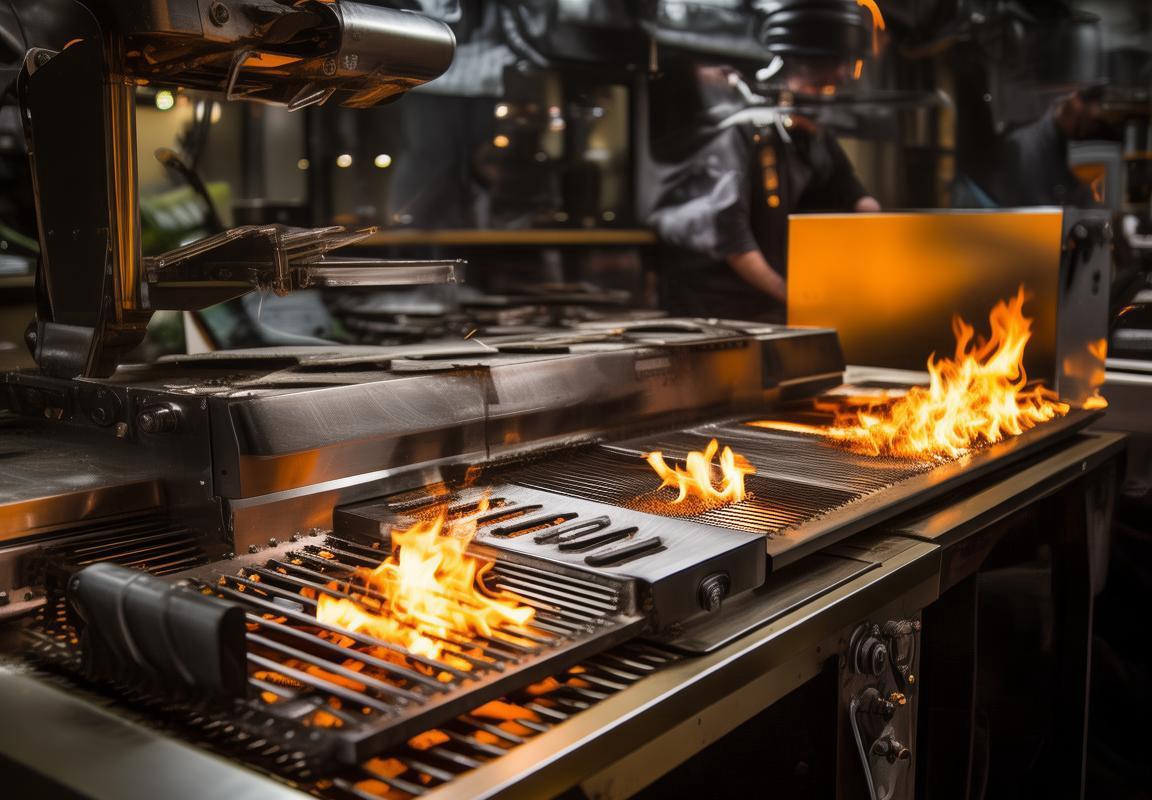
Key Players in the Contact Grill OEM Sector
In the bustling contact grill OEM sector, several key players have emerged as industry leaders, each bringing their unique strengths and innovations to the table. From cutting-edge technology to a vast array of product lines, these companies have carved out a significant niche in the market.
-
Breville – The Australian Innovation EngineBreville, an Australian brand known for its high-quality kitchen appliances, has made a name for itself in the contact grill OEM space. Their focus on innovation is evident in their sleek designs and advanced features, such as variable heat settings and adjustable cooking surfaces.
-
Cuisinart – A Household Name in Cooking AppliancesCuisinart has long been a trusted name in kitchen appliances, and their foray into the contact grill market has been met with considerable success. The brand offers a range of contact grills that cater to different cooking styles and preferences, from traditional grilling to healthier, non-stick cooking options.
-
George Foreman – A Legacy of Grilling ExcellenceThe George Foreman brand is synonymous with grilling, and their presence in the OEM sector is a testament to their commitment to quality. Their contact grills are known for their even heating, ease of use, and the ability to produce deliciously charred food without the mess of traditional grilling.
-
Hamilton Beach – A Blend of Functionality and StyleHamilton Beach has managed to blend functionality with style, offering a variety of contact grills that are both practical and visually appealing. Their products often feature intuitive controls and versatile cooking surfaces, making them a favorite among consumers looking for a high-quality grilling experience.
-
T-fal – A French Touch in Kitchen AppliancesT-fal, a French brand with a global reputation, has made significant strides in the contact grill OEM sector. Known for their non-stick coatings and durable construction, T-fal’s contact grills are designed to provide years of reliable performance, with a focus on ease of cleaning and maintenance.
-
Breville Barista Express – Specializing in Espresso Machines, TooWhile Breville is recognized for its contact grills, the brand also offers the Breville Barista Express, a contact grill designed specifically for espresso brewing. This dual-purpose appliance showcases the brand’s ability to innovate across different product categories.
-
Sunbeam – A Tradition of Home ComfortSunbeam, with its long-standing history in home appliances, has a range of contact grills that emphasize comfort and convenience. Their products often feature programmable settings and easy-to-use interfaces, making them ideal for busy households.
-
West Bend – A Tradition of Quality Since 1932West Bend has been manufacturing kitchen appliances for over eight decades, and their contact grills reflect their dedication to quality and reliability. Known for their durable construction and robust performance, West Bend’s grills are a favorite among those who value long-lasting appliances.
-
DASH – Compact and Efficient for Small SpacesDASH has gained popularity for its compact kitchen appliances, including contact grills. Their products are designed for small spaces, offering a convenient grilling solution for apartment dwellers and anyone looking for a space-saving appliance.
-
Chefman – A Brand with a Focus on Health and WellnessChefman’s contact grills are not only designed for performance but also for health-conscious consumers. With features that promote healthier cooking methods, such as adjustable temperature controls and non-stick surfaces, Chefman’s grills are a hit among those looking to maintain a balanced diet.
These key players in the contact grill OEM sector have set the bar high, each contributing to the industry’s growth and innovation. Whether it’s through technological advancements, design improvements, or a focus on consumer needs, these brands are at the forefront of the contact grill revolution.
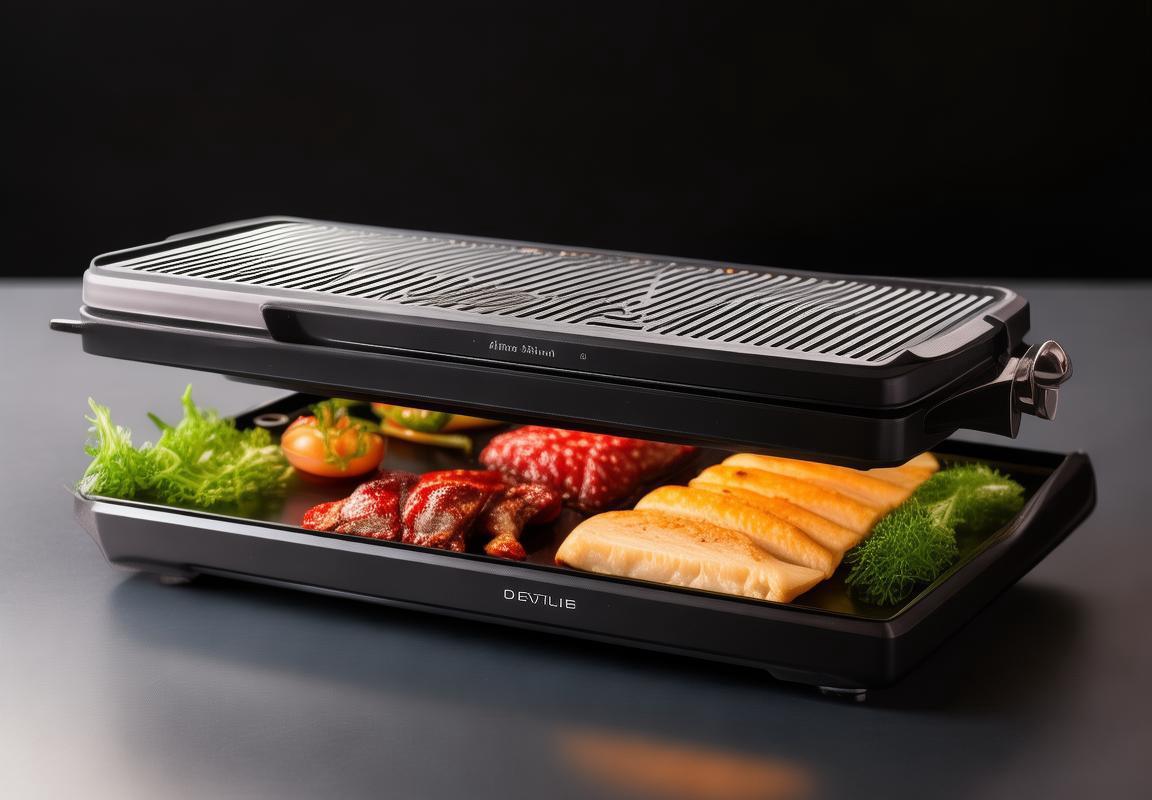
Market Dynamics in Europe
In the heart of Europe, the market dynamics for contact grills are shaped by a blend of culinary trends, consumer preferences, and technological advancements. Here’s a closer look at what’s driving the scene:
The growing interest in outdoor cooking and health-conscious eating habits has propelled the demand for contact grills. As people seek to enjoy the flavors of grilled food without the mess and smoke of traditional barbecue methods, contact grills have become a popular choice for both outdoor enthusiasts and urban dwellers with limited space.
German consumers, in particular, have shown a significant affinity for contact grills. Brands like Tefal and Thermomix have capitalized on this trend, offering a range of products that cater to the German market’s preference for quality and innovation. These brands have managed to establish a strong presence by focusing on features like even heat distribution and non-stick surfaces.
The French market, known for its love of gourmet food, has also embraced contact grills. French consumers are particularly drawn to models that offer precise temperature control, allowing them to achieve the perfect sear on their steaks and vegetables. Brands like Seb and Gourmia have gained popularity by offering a variety of contact grill options that cater to this demand for culinary excellence.
In the UK, the contact grill market has seen a surge in interest from health-conscious consumers. The rise of fitness and wellness has prompted many to look for cooking methods that reduce the addition of fats and oils. Contact grills, with their ability to cook food with minimal oil, have become a go-to choice for those following low-fat diets or looking to cut down on calories.
Swedish consumers, on the other hand, value sustainability and eco-friendly products. As such, contact grill manufacturers that offer energy-efficient models or those made from recycled materials have found a niche in the Swedish market. Brands like Electrolux and IKEA have leveraged this trend by integrating eco-friendly features into their grill designs.
The Italian market is characterized by a strong preference for high-quality, durable appliances. Italian consumers are willing to invest in contact grills that promise longevity and performance. Brands like DeLonghi and Breville have captured this market segment by offering robust and reliable contact grill models.
In the Netherlands, the contact grill market is influenced by the country’s compact living spaces and the popularity of outdoor living. Consumers here are looking for compact, easy-to-use grills that can be brought out for a quick meal or a social gathering. Brands like Philips and Sunbeam have responded by producing portable and space-saving contact grill options.
The Scandinavian countries, including Norway, Denmark, and Finland, have a unique market dynamic driven by the cold climate and the need for efficient cooking solutions. Contact grills that can provide quick and even cooking in cooler temperatures are highly sought after. Brands like Smeg and Crock-Pot have introduced models that are well-suited for these conditions.
In Eastern Europe, the contact grill market is still emerging but is growing rapidly. Countries like Poland, Hungary, and the Czech Republic are seeing an increase in demand as consumers become more aware of the benefits of contact grills. Local manufacturers are stepping up to meet this demand, offering affordable yet functional contact grill options.
The European contact grill market is also influenced by the availability of online shopping platforms. With the rise of e-commerce, consumers have more access to a variety of brands and models from around the world, which has further fueled competition and innovation within the market.
As the market continues to evolve, contact grill manufacturers must stay attuned to the changing dynamics of consumer preferences. Whether it’s through the introduction of new features, the adoption of sustainable practices, or the expansion into new markets, the key players in the contact grill OEM sector are well-positioned to navigate the dynamic European landscape.

Market Dynamics in America
The American contact grill market has seen a significant surge in popularity over the years, driven by various factors that have shaped its dynamic landscape. Here’s a closer look at the key aspects influencing this market.
-
Consumer Shift Towards Healthier Cooking MethodsWith a growing awareness of health and wellness, consumers in the U.S. are increasingly seeking cooking methods that minimize oil usage and reduce the risk of harmful compounds. Contact grills, which provide a quick and healthy way to cook, have become a popular choice among health-conscious individuals.
-
Outdoor Cooking CultureThe U.S. has a rich tradition of outdoor cooking, with many Americans owning grills for their backyards. As contact grills offer a convenient and efficient alternative to traditional charcoal or gas grills, they have found a niche within this culture, attracting both seasoned grillers and novices alike.
-
Technological Innovations and Design TrendsManufacturers in the American contact grill market have been quick to adapt to consumer demands by introducing advanced features and sleek designs. Features like adjustable heat settings, non-stick surfaces, and portable designs have made contact grills more appealing to a wider audience.
-
Market Leader Brands and Their StrategiesSeveral key players dominate the American contact grill market, each with their unique strategies for market penetration and customer satisfaction. Brands like George Foreman, Breville, and Cuisinart have built strong reputations by offering high-quality products and engaging in targeted marketing campaigns.
-
Competition and Market SaturationWhile the market for contact grills has grown, it has also become increasingly competitive. New entrants are continuously entering the market, leading to a high level of product availability and price sensitivity among consumers. This competition has driven manufacturers to innovate and differentiate their products to stand out.
-
Seasonal Demand FluctuationsSeasonal trends play a significant role in the American contact grill market. Sales tend to peak during the warmer months when outdoor activities are more prevalent. Manufacturers often plan their production and marketing strategies around these seasonal fluctuations.
-
The Impact of E-commerceThe rise of e-commerce has significantly influenced the contact grill market in America. Online retailers provide consumers with a wider range of products and competitive pricing, making it easier for them to compare and purchase contact grills. This shift has also allowed manufacturers to reach a broader audience.
-
Consumer Reviews and Word-of-MouthPositive consumer reviews and word-of-mouth referrals have become powerful drivers in the American contact grill market. Satisfied customers often share their experiences on social media and review platforms, influencing the purchasing decisions of others.
-
The Role of Retail PartnershipsEstablished retail partnerships have been crucial for manufacturers to gain market share. Large retailers like Walmart and Target have showcased contact grills in their stores, making them more accessible to consumers. These partnerships also provide valuable insights into consumer preferences and buying habits.
-
Future Outlook and Potential ChallengesLooking ahead, the American contact grill market is expected to continue growing, with a focus on sustainability, convenience, and technological advancements. However, manufacturers may face challenges such as rising material costs, stricter safety regulations, and the need to innovate continuously to stay ahead of the competition.

Technological Advancements in Contact Grill Manufacturing
In the ever-evolving landscape of contact grill manufacturing, technological advancements have played a pivotal role in shaping the industry. These innovations not only enhance the user experience but also drive market demand and set new standards for efficiency and convenience.
Grill surfaces have seen a significant transformation with the introduction of advanced materials. High-quality stainless steel, known for its durability and resistance to corrosion, has become the norm. Some manufacturers have even started using non-stick coatings that eliminate the need for excessive oil, making grilling healthier and easier to clean.
Smart features have become a cornerstone of modern contact grills. Integration with smartphones through Bluetooth technology allows users to control their grills remotely, adjusting temperatures and timers from the comfort of their couch. This connectivity also enables data tracking, providing insights into cooking times and temperatures for perfect results every time.
The development of precise temperature control systems has been a game-changer. Traditional grills often struggle with maintaining consistent heat, leading to uneven cooking. However, with the help of advanced thermostats and sensors, modern contact grills can maintain a precise temperature, ensuring that food is cooked to perfection without overcooking or burning.
Safety features have also been a focus of technological innovation. Modern contact grills come with safety locks to prevent accidental operation, child-proofing mechanisms, and automatic shut-off features that turn off the grill if it’s left unattended for too long. These features not only protect users but also give peace of mind to those with young children or pets.
The design of contact grills has also seen a shift towards user-friendliness. Sleek, modern aesthetics have replaced the bulky, clunky designs of the past. Many grills now come with foldable legs, making them easier to store and transport. The inclusion of ergonomic handles and intuitive interfaces has made grilling a more enjoyable experience for users of all ages.
In terms of energy efficiency, contact grills have made strides. Newer models are designed to use less energy while still delivering the same level of performance. This not only reduces utility bills but also aligns with the growing demand for eco-friendly products.
The integration of innovative cooking methods has expanded the capabilities of contact grills. Some models now offer dual-zone cooking, allowing users to grill and sear simultaneously on different sections of the grill. Others have built-in smokers, enabling a wider variety of culinary experiences without the need for additional equipment.
The rise of sous-vide cooking has also influenced contact grill technology. Some high-end models now come with built-in vacuum sealers, allowing users to sous-vide their food directly on the grill. This method ensures even cooking and maximum flavor retention, making contact grills a versatile tool for both beginners and seasoned chefs.
In the realm of accessories, manufacturers have developed a range of attachments to enhance the functionality of contact grills. From pizza stones to fish grill baskets, these accessories cater to diverse cooking preferences and allow users to experiment with various recipes.
The advancements in contact grill manufacturing are not just limited to the grill itself. The packaging and marketing of these products have also evolved. Eco-friendly packaging, clear and informative labeling, and engaging marketing campaigns have helped to educate consumers about the benefits of these modern grills.
As the industry continues to innovate, we can expect to see even more sophisticated features and technologies being integrated into contact grills. The future holds promise for even greater convenience, efficiency, and culinary possibilities, making contact grills an indispensable part of modern kitchens.
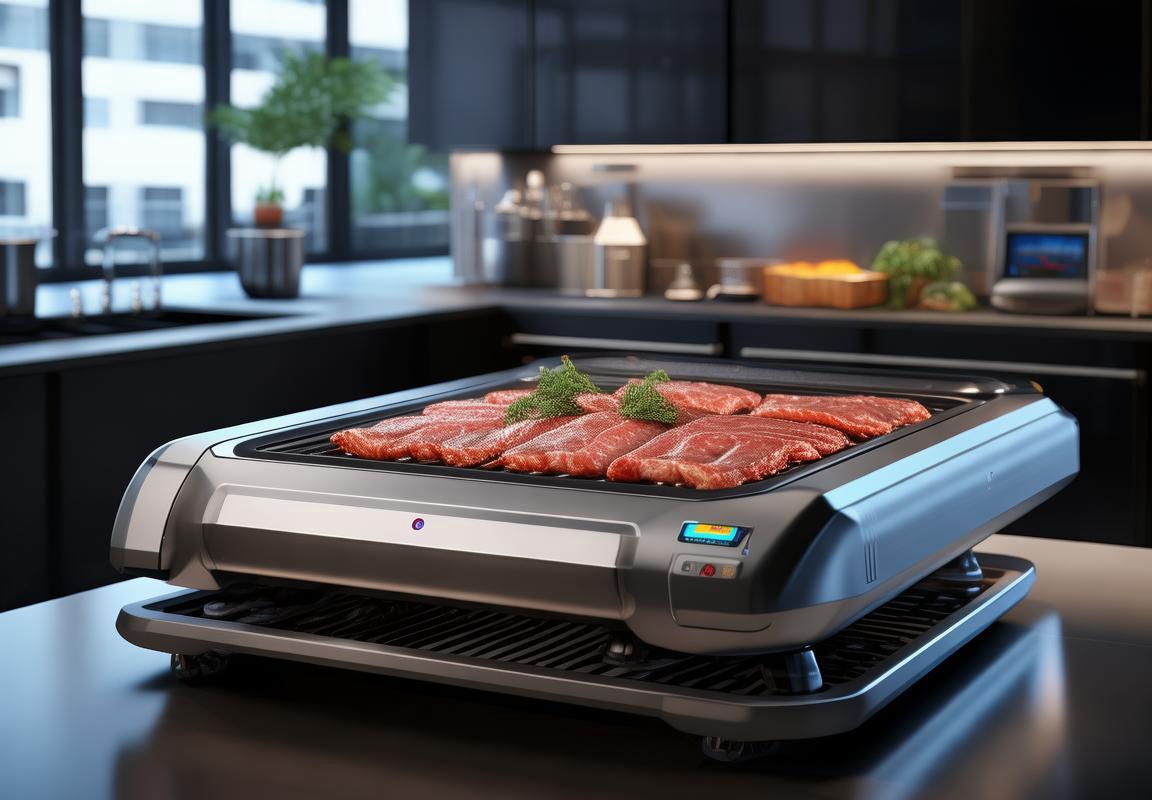
Challenges and Opportunities for Contact Grill OEMs
In the competitive landscape of the contact grill OEM sector, challenges and opportunities coexist, shaping the future of manufacturers. Here’s a closer look at the dynamics at play:
The market is evolving rapidly, with consumers seeking not just efficient cooking solutions but also those that align with their health and environmental concerns. OEMs must navigate this dual expectation, offering products that are both convenient and sustainable.
Innovation in materials has become a cornerstone for OEMs. The shift from traditional stainless steel to non-stick coatings and eco-friendly materials like bamboo or recycled plastics reflects a broader trend toward responsible manufacturing. This change not only appeals to eco-conscious consumers but also extends the lifespan of the grills, reducing waste.
Regulatory compliance poses a significant challenge for OEMs. Different regions have varying standards for emissions, energy efficiency, and safety, requiring manufacturers to invest in research and development to meet these diverse requirements. The complexity of these regulations can also lead to higher costs, which must be managed carefully.
Consumer preferences are becoming increasingly diverse, with a growing segment of the market demanding specialized features. From adjustable heat settings to built-in temperature gauges, OEMs must continuously innovate to cater to these niche needs. This diversification can lead to a fragmented market, making it crucial for OEMs to stay agile and adaptable.
The rise of e-commerce has democratized access to the contact grill market, allowing smaller players to compete with established OEMs. This shift has opened up new opportunities for OEMs to expand their distribution channels and reach a wider audience. However, it also means that competition is fierce, and OEMs must leverage digital marketing and customer service to differentiate themselves.
Sustainability is no longer just a buzzword; it’s a core business strategy. OEMs that can demonstrate a commitment to reducing their carbon footprint and using renewable energy sources are likely to gain a competitive edge. This can involve everything from sourcing materials locally to investing in energy-efficient production processes.
The integration of smart technology into contact grills is a game-changer. Features like Wi-Fi connectivity, remote control, and recipe suggestions are becoming standard, offering users a more interactive and personalized cooking experience. OEMs that can incorporate these technologies seamlessly into their products will likely see increased customer loyalty and market share.
The global supply chain disruptions have been a major challenge for OEMs, affecting production timelines and costs. Finding reliable suppliers and managing inventory efficiently has become crucial. OEMs that can establish resilient supply chains will be better positioned to weather these challenges and maintain a steady supply of products to the market.
The rise of health-conscious consumers has created a demand for contact grills that can cook a variety of foods, from lean meats to vegetables, without the addition of oils or fats. OEMs that can offer a range of grills suitable for different dietary preferences and restrictions are likely to see a surge in sales.
Innovation in cooking technology, such as the development of grills with variable heat zones, allows for more precise control over cooking temperatures. This feature is particularly appealing to professional chefs and enthusiasts who value the ability to achieve different cooking results on a single grill.
The opportunity to collaborate with culinary influencers and chefs is another avenue for OEMs to expand their reach. By partnering with these figures, OEMs can gain credibility and tap into their follower base, which can lead to increased brand awareness and sales.
Lastly, the opportunity to customize contact grills for specific markets cannot be overlooked. Tailoring products to meet the unique preferences and needs of different regions can significantly boost sales and customer satisfaction. OEMs that can offer personalized solutions will stand out in a crowded market.

The Importance of Quality and Reliability
In the highly competitive contact grill industry, the importance of quality and reliability cannot be overstated. These two factors play a pivotal role in shaping the reputation, customer loyalty, and long-term success of Original Equipment Manufacturers (OEMs). Let’s delve into why quality and reliability are so crucial.
Customers today are more discerning than ever before. They seek products that not only meet their needs but also exceed their expectations. In the case of contact grills, this means a seamless cooking experience, durability, and safety. An OEM that fails to deliver on these fronts risks losing customers to competitors who prioritize quality.
A high-quality contact grill is one that is well-engineered, uses premium materials, and is built to last. This doesn’t just apply to the exterior design but also to the internal components that ensure even heating and consistent performance. When a grill is reliable, it becomes a trusted tool in the kitchen, leading to repeat purchases and positive word-of-mouth referrals.
Reliability is also about minimizing downtime and service issues. A contact grill that frequently breaks down or requires frequent repairs can be a source of frustration for consumers. OEMs that invest in rigorous quality control and robust manufacturing processes can significantly reduce the likelihood of such problems.
Moreover, quality and reliability are closely tied to safety. In the kitchen, where heat and power are involved, it’s imperative that contact grills are designed with safety in mind. This includes features like non-stick surfaces, automatic shut-off mechanisms, and sturdy construction that can withstand the rigors of daily use.
In the realm of customer service, quality and reliability are also paramount. When a customer has a problem with their contact grill, they expect prompt and effective solutions. OEMs that offer reliable customer support, including easy-to-access troubleshooting guides and responsive customer service teams, can build a loyal customer base.
For OEMs, maintaining high standards of quality and reliability is not just about meeting regulatory requirements; it’s about staying ahead of the curve in a market that is rapidly evolving. Innovations in materials, such as advanced non-stick coatings or high-heat-resistant alloys, can enhance the quality of a contact grill.
Moreover, the rise of smart technology has opened new avenues for improving reliability. Smart grills with integrated temperature control, Wi-Fi connectivity, and smartphone apps provide users with convenience and peace of mind. However, these features also introduce new challenges in terms of software development and system integration, which must be handled with precision to ensure the grill’s reliability.
Another aspect of quality and reliability is the sustainability of the products. As consumers become more environmentally conscious, OEMs are under pressure to produce grills that are not only durable but also eco-friendly. This means using recycled materials, minimizing waste during production, and designing products that can be easily recycled at the end of their life cycle.
The financial implications of quality and reliability are significant. High-quality, reliable contact grills tend to have a longer lifespan, which means fewer replacements and lower maintenance costs for consumers. This can translate into higher lifetime value for the OEMs, as customers are less likely to switch brands once they have a positive experience.
Furthermore, the perception of quality and reliability can have a substantial impact on brand image. A company that is known for producing top-tier contact grills can leverage this reputation to enter new markets or launch new product lines. Conversely, a poor reputation for quality can be a significant barrier to growth.
In conclusion, the importance of quality and reliability in contact grill manufacturing cannot be overstated. They are not just attributes of a good product but are also integral to building a strong brand, fostering customer loyalty, and ensuring long-term success in the industry. For OEMs, the commitment to excellence in these areas is not just a best practice but a necessity in today’s competitive landscape.
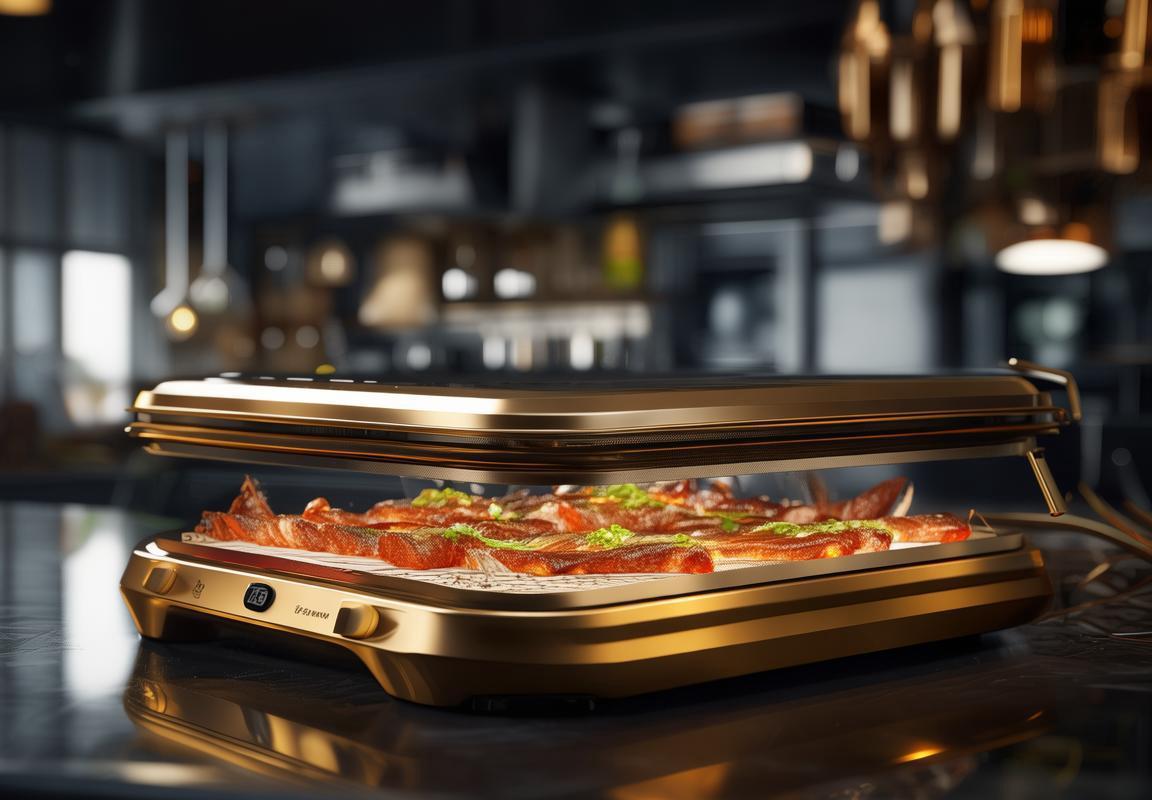
Future Outlook for Contact Grill OEMs
In the ever-evolving landscape of the contact grill industry, OEMs (Original Equipment Manufacturers) play a pivotal role in shaping the future of this niche market. As we gaze towards the horizon, several factors are poised to define the future outlook for these manufacturers.
The surge in health consciousness among consumers has led to a shift towards healthier cooking methods, and contact grills, with their ability to provide seared and grilled flavors without excessive oil, are perfectly positioned to capitalize on this trend. This shift not only opens up opportunities for OEMs to innovate and offer more health-centric products but also challenges them to maintain a balance between performance and health benefits.
As the demand for contact grills continues to rise, OEMs are under pressure to enhance their product lines with advanced features that cater to a diverse range of consumer preferences. Customization, for instance, is becoming increasingly important as consumers seek products that not only meet their cooking needs but also reflect their personal style. This demand for customization necessitates a flexible manufacturing process that can adapt to the ever-changing market demands.
The integration of smart technology is another area where OEMs are focusing their efforts. Smart contact grills that offer connectivity to mobile devices and the ability to control cooking settings remotely are becoming more popular. This technological integration not only adds convenience to the cooking experience but also opens up new revenue streams for OEMs through the development of companion apps and subscription services.
In terms of sustainability, the future of contact grill OEMs is closely tied to the adoption of eco-friendly materials and manufacturing practices. As environmental concerns grow, consumers are increasingly looking for products that are produced with consideration for the planet. OEMs that can demonstrate a commitment to sustainability through their products and operations may gain a competitive edge in the market.
However, with these opportunities come challenges. The rapid pace of technological advancement requires OEMs to invest heavily in research and development to stay ahead of the curve. This investment can be risky, especially for smaller manufacturers that may not have the financial resources to keep up with larger players.
Moreover, the global supply chain disruptions have highlighted the vulnerabilities of OEMs. A reliance on specific suppliers for critical components can lead to delays and increased costs. As such, OEMs must focus on diversifying their supply chains to mitigate the risks associated with geopolitical tensions and trade disputes.
Another challenge is the need for OEMs to navigate an increasingly stringent regulatory environment. As health and safety standards become more rigorous, OEMs must ensure that their products comply with these regulations, which can be a complex and costly process.
Despite these challenges, the future outlook for contact grill OEMs remains promising. The growing demand for health-conscious cooking solutions, coupled with the potential for technological innovation and sustainability, presents a fertile ground for growth. OEMs that can adapt to these changing dynamics, invest in R&D, and maintain a focus on quality and customer satisfaction are likely to thrive in the years to come.
In conclusion, the future of contact grill OEMs hinges on their ability to innovate, respond to consumer demands, and navigate the complexities of the global market. By staying agile and forward-thinking, these manufacturers can not only meet the challenges but also capitalize on the numerous opportunities that lie ahead.
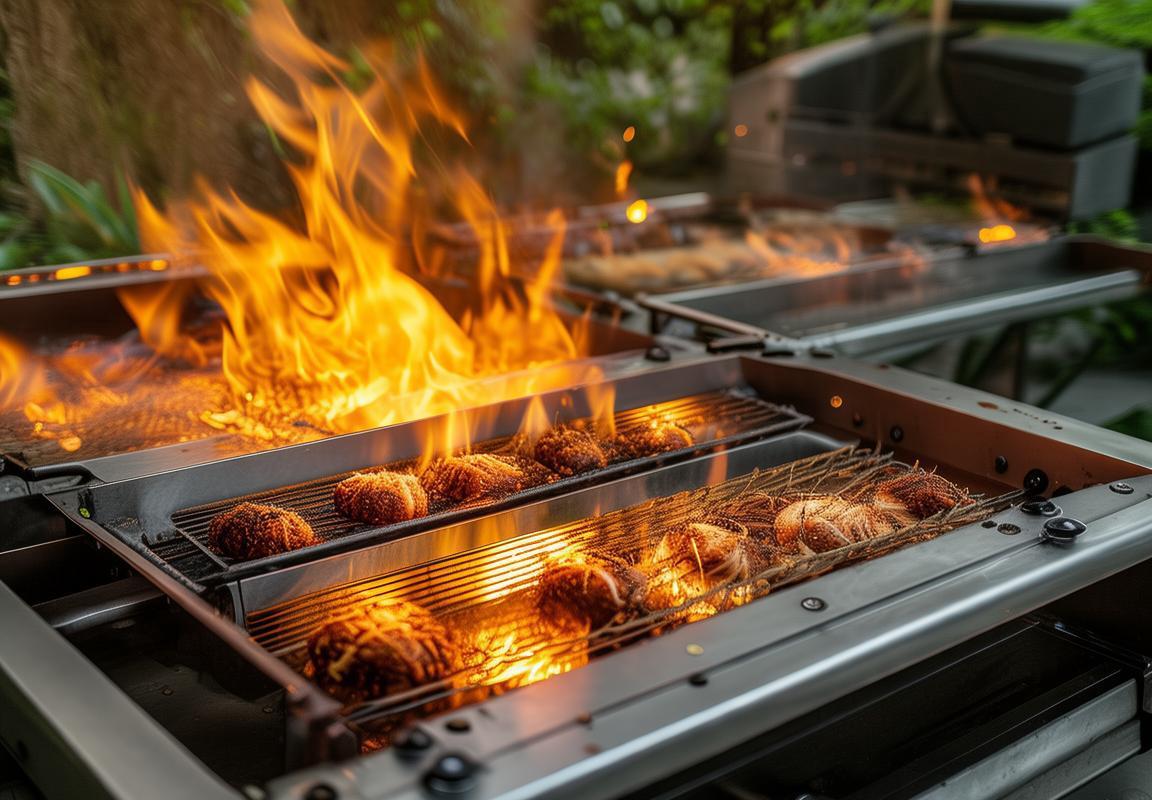
Conclusion
In reflecting on the journey of contact grill OEMs, it’s clear that the industry has come a long way. From the early days of simple, flat grills to the sophisticated, multi-functional devices we see today, the evolution has been marked by innovation and consumer demand. As we stand at the precipice of what could be a transformative era for the industry, it’s worth considering the impact of these developments and the potential for future growth.
The rise of contact grills has been fueled by a shift in consumer preferences towards healthier cooking methods and the convenience of countertop cooking appliances. As health consciousness continues to grow, OEMs must stay ahead of the curve, offering products that not only meet but exceed consumer expectations. This means investing in research and development to create grills that are not just efficient but also easy to use and maintain.
The importance of quality and reliability cannot be overstated. In an industry where competition is fierce and customer loyalty is earned through exceptional performance, the reputation of a contact grill OEM is its most valuable asset. A grill that performs consistently and is built to last will always win over consumers who value their time and money.
The market dynamics in both Europe and America reflect a consumer base that is increasingly discerning. They seek not just a product but an experience—a cooking experience that is both enjoyable and rewarding. OEMs must understand these nuances and tailor their offerings to the specific needs and tastes of each region.
In Europe, where the market has matured, there’s a strong emphasis on sustainability and eco-friendly products. OEMs that can integrate these values into their designs will find a niche market that values responsible manufacturing. Meanwhile, in America, the trend towards customization and personalization is significant, with consumers looking for grills that can be adapted to their specific cooking styles and preferences.
As we look to the future, the opportunities for contact grill OEMs are vast. The integration of smart technology, for instance, offers a new frontier. Grills that can be controlled via smartphone apps, providing real-time cooking data and even personalized recipes, could revolutionize the way we cook at home. The potential for data analytics to improve cooking efficiency and food safety is also immense.
However, with opportunity comes challenge. The rapid pace of technological innovation requires OEMs to be agile and adaptable. Staying ahead of the curve means continuously investing in research and development, which can be costly. Moreover, as the market becomes more global, OEMs must navigate complex supply chains and comply with varying regulations across different countries.
The importance of partnerships cannot be overstated. OEMs that collaborate with ingredient suppliers, retailers, and even foodservice providers can create a more cohesive ecosystem that benefits all stakeholders. By sharing knowledge and resources, these partnerships can lead to breakthroughs in product design, marketing strategies, and customer service.
In conclusion, the contact grill OEM sector is at a pivotal point. The industry has the potential to expand significantly, but only if OEMs are willing to embrace change, invest in quality, and focus on the evolving needs of consumers. The path ahead is filled with challenges, but also with exciting opportunities. By staying true to their core values and remaining committed to innovation, contact grill OEMs can secure a bright and prosperous future.